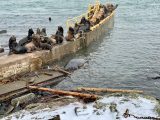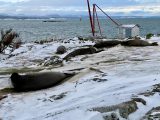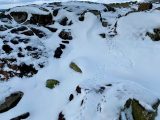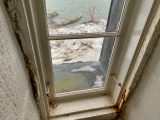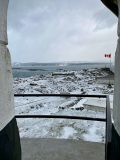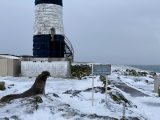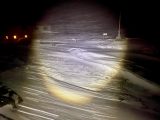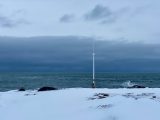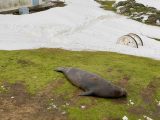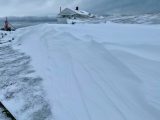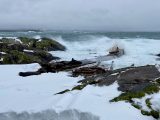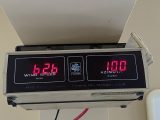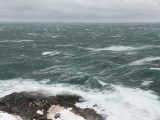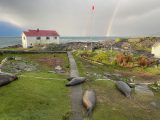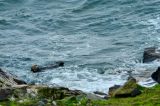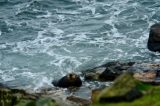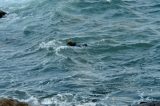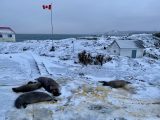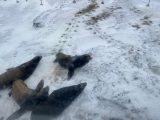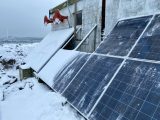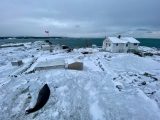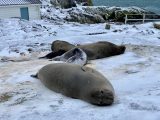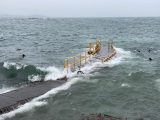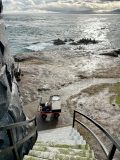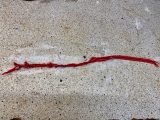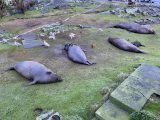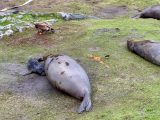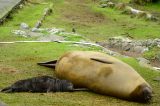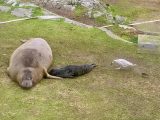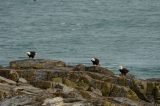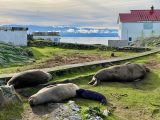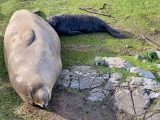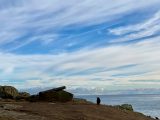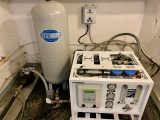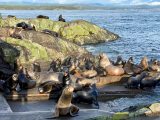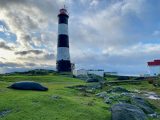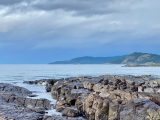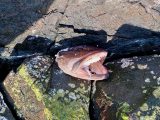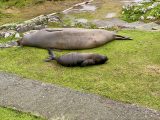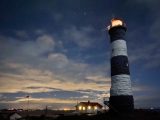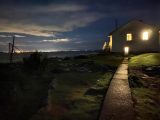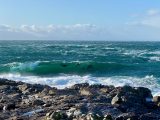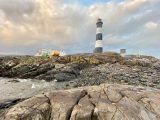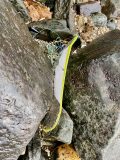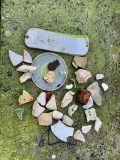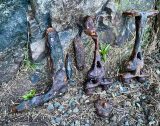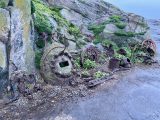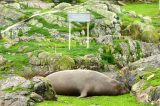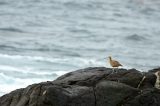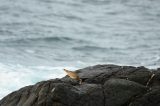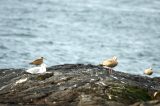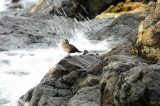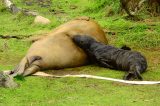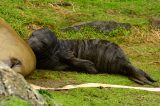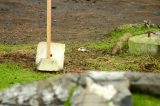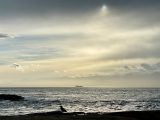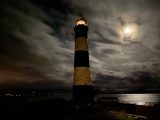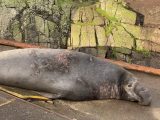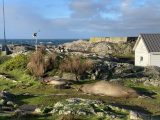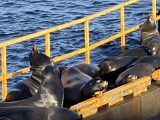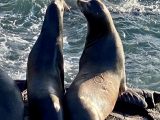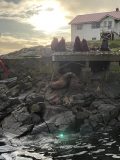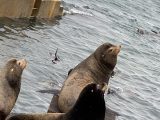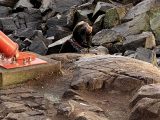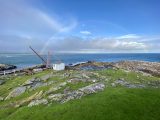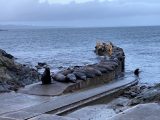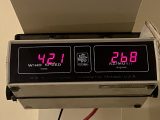Wind: yesterday 10-29 knots N, today 16-63 knots N switching to E in the afternoon
Sea State: yesterday rippled, today up to 3 m waves from E
Visibility: yesterday and today 1-10 NM
Sky: both days fog, blowing snow, cloudy and patches of sun
Temperature: yesterday -1 to -4 °C, today -4 to 3 °C
Atmospheric CO2: 412.38 ppm (recorded by NOAA at Mauna Loa Observatory, Hawaii)
The snow has continued to fall, creating large snowdrifts against buildings, paths and rocks. I have enjoyed watching the elephant seals move through the snow and appear to play in it. The snowdrifts have changed my routes around the island, finding the path of least resistance that doesn’t disturb the ground or engulf me into a metre of snow or a hidden puddle. It’s not all fun and games here, there have also been some fights amongst the elephant seals. The beta males have been chasing each other around the island and sinking their teeth into each other. There are once again four adult males on the island. The alpha male continues to be with the pups and females. A new pregnant female elephant seal arrived yesterday morning as I was waiting for Greg to arrive in the boat with a food delivery. She made her way up the boat ramp to the centre of the island with the others. That brings the current elephant seal count to ten. Perhaps two more pups will arrive soon.
Since the snow and strong winds came, the sea lions are still mostly in the water, floating in large groups. Today, a few california sea lions huddled on the jetty. A smaller number of birds have been seen in the ecological reserve. Stay tuned for the post in two days with the results of the weekly census.
See the photos below for some recent snowy, windy and wavy views.
- Yesterday, a new female elephant seal arrived on the boat ramp. I was collecting those large pieces of wood when I saw her approach, then I backed off and gave her some space to come ashore.
- It’s getting crowded here
- Bird tracks in the snow. Black turnstone perhaps.
- Another view of the elephant seal group on the lawn, before the second round of snow.
- Looking northwest out of the lower door into the lighthouse
- The alpha male on the lookout
- The snowdrifts added a level of difficulty as I navigated my way to turn off the generator last night. In the centre of the flashlight beam, is the large alpha male, sleeping under the snowdrift. I’m glad I didn’t walk through that snow!
- The three beta elephant seals have a stand off on the southwest side of the island, near the CODAR antenna, which measures sea currents.
- The wounds are visible on the back of a beta male elephant seal that has been fighting with two of the other males. Blood can be seen in the snow on the path he travelled.
- A large snowdrift covers the rock ledge by the desalinator building and west of the base of the lighthouse.
- California sea lions hauled out on the jetty between the snow and large waves. Look at all the wood delivered by the sea for burning in the wood stove next winter. I hope some wood is still there when the snow and wind subside.
- The anemometer showed very strong gusts of wind from the east. 62.6 knots is almost hurricane force.
- A view from the top of the lighthouse of large waves from the east. A large raft of sea lions can be seen as a brown blob in the water in the centre right of the photo.
Video clips of a few elephant seals interacting with the snow:

